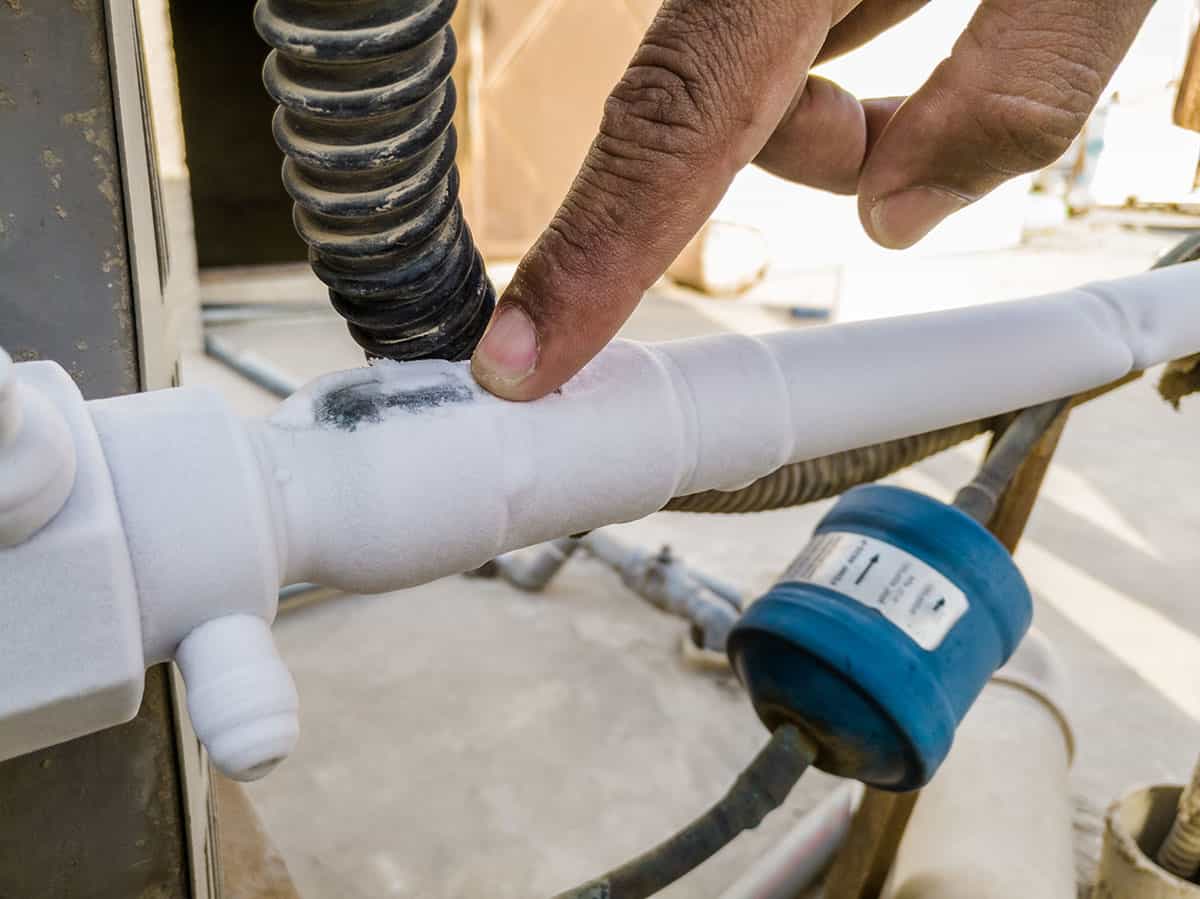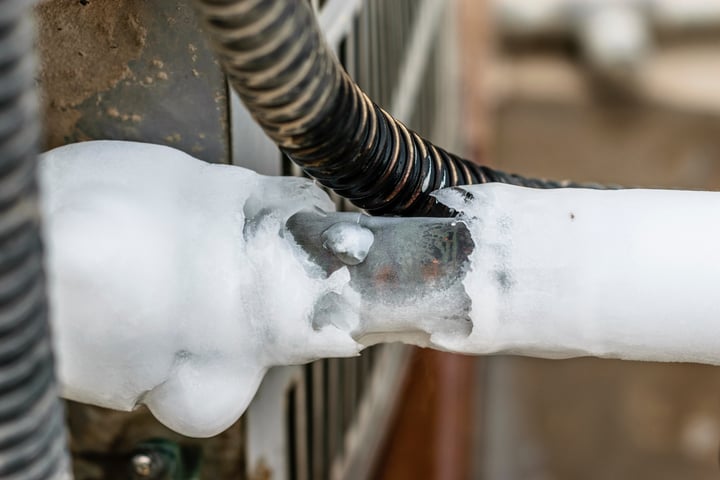How to Deal With a Frozen AC Pipe - Essential Steps for Recovery
How to Deal With a Frozen AC Pipe - Essential Steps for Recovery
Blog Article
We've encountered this post relating to Why Is Ice On My Outside Air Conditione down the page on the web and reckoned it made sense to talk about it with you on my blog.

Intro
Discovering that your a/c pipeline is frozen can be concerning, especially during warm summer season when you count on your a/c unit the most. Understanding what to do in such a situation is critical to stop further damage to your air conditioning system and ensure your comfort indoors.
Comprehending the Causes
A number of variables can add to the cold of an air conditioning pipeline. Comprehending these reasons can help you address the concern successfully.
Lack of Airflow
One usual root cause of a frozen air conditioner pipeline is inadequate air movement. When the air movement over the evaporator coil is limited, it can trigger the coil to go down below freezing temperature level, bring about ice development on the pipeline.
Low Refrigerant Levels
Inadequate refrigerant levels in your AC system can additionally result in a frozen pipe. Reduced refrigerant degrees can cause the stress in the system to drop, leading to the freezing of wetness on the evaporator coil.
Winter Conditions
In colder environments, freezing temperature levels outside can add to the freezing of AC pipes. If your air conditioning device is not correctly protected or if there are leakages in the ductwork, cold air can infiltrate the system, creating the pipe to freeze.
Dirty Air Filters
Filthy or stopped up air filters can limit air flow in your AC system, resulting in various issues, including a frozen pipeline. It's essential to change or cleanse your air filters frequently to ensure correct airflow and stop ice buildup.
Indications of a Frozen AC Pipe
Identifying the signs of an icy AC pipe is crucial for timely action.
Minimized Airflow
If you see a substantial decrease in airflow from your vents, it could indicate a frozen pipe.
Ice Buildup on the Pipe
Visible ice build-up on the cooling agent line or the evaporator coil is a clear sign of an icy a/c pipeline.
Unusual Sounds from the Unit
Unusual sounds, such as hissing or gurgling, coming from your AC system can signify that there's ice existing on the pipeline.
Immediate Actions to Take
When faced with a frozen AC pipe, it's necessary to act quickly to avoid more damage to your air conditioning system.
Turning off the air conditioning
The initial step is to switch off your air conditioner to avoid the system from running and exacerbating the concern.
Checking for Blockages
Examine the location around the interior unit for any kind of blockages that might be obstructing air flow, such as furnishings or curtains.
Thawing the Pipe
You can use gentle approaches like putting towels soaked in cozy water around the frozen pipeline to help thaw it gradually.
Preventive Measures
Taking safety nets can aid avoid future incidents of a frozen air conditioning pipeline.
Regular Maintenance Checks
Set up normal maintenance consult an expert HVAC technician to ensure that your a/c system is running successfully.
Changing Air Filters
Frequently change or cleanse your air filters to prevent airflow limitations and preserve optimum performance.
Insulating Exposed Pipes
If your air conditioner pipes are exposed to cool temperatures, take into consideration protecting them to avoid cold during winter months.
Looking For Professional Help
If DIY approaches fail to fix the concern or if you're unsure concerning just how to proceed, it's ideal to look for aid from a certified HVAC specialist.
When DIY Methods Fail
If your efforts to thaw the pipeline or address various other problems are unsuccessful, it's time to hire an expert.
Value of Hiring a Professional HVAC Technician
A certified HVAC technician has the competence and devices needed to identify and repair problems with your AC system securely and properly.
Conclusion
Taking care of an icy air conditioner pipe can be a discouraging experience, but understanding just how to react can assist lessen damages and bring back comfort to your home. By understanding the reasons, recognizing the signs, and taking prompt action, you can properly deal with the problem and prevent future events.
Frozen AC Line: Why It Happens & What To Do About It
A frozen AC line can be a rather peculiar sight in a place like Phoenix, Arizona where nothing ever freezes. In this post, we’ll discuss what makes an air conditioner line frozen – and what you can do about it.
Dirty Air Filters
Did you know that you should be cleaning or replacing your air filters on a monthly basis? Failing to do this can result in airflow issues that, in turn, cause your evaporator coils and lines to freeze over. You’ll notice a buildup of ice on both components, although the buildup on your pipes will, of course, be more evident unless you open your air condition up to reveal the coils.
What To Do About It
Give your air filter a good cleaning if it’s reusable. If not, replace the filter outright. Next, switch your air conditioner’s fan setting on and leave it there for 2-3 hours. This will draw warm air in, helping to thaw your evaporator coil. You can also check out this article for some tips on cleaning the coils themselves if you’d like to speed the process up. Before you switch the unit back to its normal state, make sure the supply vents are completely unobstructed and free of dust or other debris.
If you keep having this issue even after replacing your filters regularly, contact a local HVAC repair company and have them inspect your evaporator coil, ductwork, and any other components that may be at fault. If you live in the Phoenix, Arizona area, give American Home Water and Air a call.
Low Refrigerant Levels/Leakage
What To Do About It
Contrary to what air conditioner “recharge” companies often tell their clients about refrigerant, it should never need to be simply refilled. You see, refrigerant runs in what experts refer to as a “closed loop.” Refrigerant really shouldn’t be leaving that loop. If it is, you’ve got a leak.
Paying someone to come and pump more refrigerant into your system (aka “recharge” it) isn’t the solution. Doing that will simply kick the can down the road. Besides, refrigerant leaks can be harmful to the environment and people in your home.
Rather, you need to take care of the leak with the help of a technician. Check out this article for some more information about dealing with air conditioners that are leaking refrigerant. Before you contact a technician, switch your thermostat to the off position. Then, switch the fan setting on and let it run for 2-3 hours so the unit can thaw.
Improper Temperature Setting
Improper temperature settings can also cause a drop in your air conditioner’s pressure. What many people don’t realize is that air conditioners are actually designed to run when temperatures have fallen above roughly 60 degrees Fahrenheit. If you run the unit when it’s cold outside, you’ll run into many issues, including frozen components.

We were introduced to that article about Have a Frozen AC Line? Here’s How to Fix It through an acquaintance on another web blog. For those who liked our article kindly make sure you remember to pass it around. I take joy in reading our article about Have a Frozen AC Line? Here’s How to Fix It.
Click Here Report this page